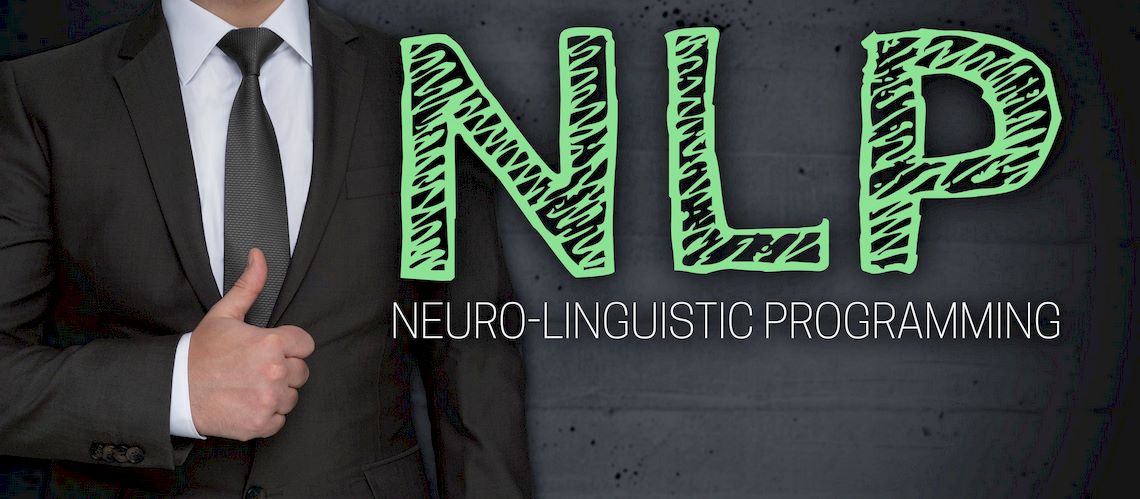Within the Excellence Nexus Framework, Neuro-Linguistic Programming (NLP) is a transformative psychological tool for achieving Mental Peak and supporting overall excellence. Rooted in the study of human behavior and communication, NLP provides practical techniques for enhancing cognitive performance, building emotional resilience, and fostering personal growth (Grinder & Bandler, 1976; Bandler & Grinder, 1979). Its multifaceted benefits make it a cornerstone for those striving to excel across all dimensions of life (Andreas, Faulkner & Andreas, 1994).
Application in the Excellence Nexus
Mental Peak
NLP is a foundational modality for achieving Mental Peak by fostering cognitive growth, mental clarity, and focus. Techniques such as modeling and reframing help individuals replace limiting beliefs with empowering perspectives, optimizing their ability to solve problems and make decisions (Dilts, 1998).
Example: A business leader struggling with self-doubt used modeling to emulate the confident demeanor and communication style of a mentor. By adopting these behaviors, the leader improved their ability to make decisive choices under pressure, leading to increased team trust and productivity.
Anchoring techniques enable individuals to access peak emotional states, enhancing motivation and performance in high-stakes situations (O’Connor, 2021).
Physical Peak
A positive mindset cultivated through NLP can significantly improve physical health and vitality. By reducing stress and promoting healthy behaviors, NLP techniques indirectly support physical well-being. For example, effective communication and stress-management strategies foster a balanced lifestyle, leading to greater energy and overall health (Wake, Gray & Bourke, 2012).
Example: An athlete preparing for a major competition used anchoring to recreate a state of calm focus before every performance. This helped reduce pre-race anxiety and improve their physical output, aligning with their training goals.
Additionally, NLP’s focus on goal-setting can enhance adherence to fitness and nutrition routines, aligning with Physical Peak goals (Andreas, Faulkner & Andreas, 1994).
Emotional Peak
NLP’s emphasis on emotional regulation and resilience is central to achieving Emotional Peak. Techniques such as anchoring and rapport-building empower individuals to navigate interpersonal relationships effectively and maintain composure during adversity (Knight, 2010).
Example: A professional experiencing workplace conflict used reframing to reinterpret disagreements as opportunities for collaboration rather than confrontation. This mindset shift improved their interactions with colleagues, creating a more supportive and harmonious environment.
By reinforcing positive beliefs and reducing self-limiting thoughts, NLP helps cultivate emotional stability and inner strength (Bandler & Grinder, 1979).
Spiritual Peak
Positive thinking and mental clarity fostered by NLP create the foundation for achieving Spiritual Peak. By reducing mental clutter and enhancing emotional harmony, NLP enables individuals to engage more fully in spiritual practices and align with their higher purpose (O’Connor, 2021).
Example: A meditation practitioner struggling to quiet their mind used reframing to view intrusive thoughts as temporary distractions rather than obstacles. This approach deepened their meditation practice, fostering a sense of inner peace and spiritual growth.
Reframing techniques encourage a deeper understanding of personal challenges, enhancing spiritual growth and resilience (Dilts, 1998).
Prosperity Peak
Greater self-confidence, improved emotional regulation, and reduced stress enable individuals to achieve Prosperity Peak. NLP’s focus on goal-setting and communication enhances productivity and career success, empowering individuals to maximize their potential in professional and financial realms (Knight, 2010).
Example: A salesperson used NLP’s language techniques to build rapport with clients, leading to more effective communication and an increase in sales. This success translated to greater confidence and career advancement, contributing to their long-term prosperity goals.
By fostering clarity and purpose, NLP aligns actions with long-term prosperity goals (Andreas, Faulkner & Andreas, 1994).
Impact Peak
NLP’s tools for improving mental clarity and emotional stability are essential for making a lasting positive impact on others. Effective communication and emotional regulation enable individuals to build strong connections, inspire others, and contribute meaningfully to their communities (Wake, Gray & Bourke, 2012).
Example: A community leader used NLP rapport-building techniques to foster trust and collaboration among diverse stakeholders. This approach resulted in a successful project that addressed a critical local issue, leaving a lasting positive legacy.
By fostering alignment between personal values and actions, NLP supports the creation of a powerful legacy (Tosey & Mathison, 2009).
Benefits within the Excellence Nexus
The integration of NLP into the Excellence Nexus Framework offers a wide array of benefits across all peaks of excellence:
- Enhanced Mental Performance and Clarity: Techniques such as modeling and anchoring optimize focus, decision-making, and cognitive agility (Dilts, 1998).
- Reduced Stress and Anxiety: NLP strategies, such as reframing and anchoring, promote emotional resilience and stress management (Wake, Gray & Bourke, 2012).
- Improved Communication and Interpersonal Skills: Rapport-building and language pattern analysis strengthen relationships and foster collaboration (O’Connor, 2021).
- Greater Overall Well-Being: By integrating positive thinking and emotional regulation techniques, NLP supports a balanced and fulfilling life (Andreas, Faulkner & Andreas, 1994).
How to Integrate NLP in the Excellence Nexus
- Assessment: Evaluate your mental, emotional, and physical needs to determine how NLP can address specific challenges. For instance:
- Identify areas where limiting beliefs or negative self-talk may hinder performance (Knight, 2010).
- Reflect on communication or emotional regulation challenges in personal and professional settings (O’Connor, 2021).
- Implementation: Integrate NLP techniques into your daily routine to enhance Mental Peak and overall performance. Examples include:
- Using anchoring techniques to access peak states of motivation and confidence during high-pressure situations (Dilts, 1998).
- Applying reframing to reinterpret challenges and setbacks as opportunities for growth (Knight, 2010).
- Practicing rapport-building to enhance relationships and collaboration (Bandler & Grinder, 1979).
- Optimization: Continuously monitor and adjust your use of NLP techniques to maximize their impact. Practical steps include:
- Journaling: Document your progress and breakthroughs to maintain focus and accountability (Wake, Gray & Bourke, 2012).
- Self-Assessments: Regularly evaluate your performance across the peaks to identify areas for improvement (Knight, 2010).
- Feedback from Mentors or Peers: Seek external perspectives to refine your application of NLP techniques and gain deeper insights (Tosey & Mathison, 2009).
Conclusion
Neuro-Linguistic Programming is an indispensable tool within the Excellence Nexus Framework for achieving Mental Peak and excelling across all dimensions of life. By integrating NLP techniques into your daily practices, you can enhance cognitive performance, support emotional resilience, and align with your highest aspirations. As a cornerstone of the Excellence Nexus, NLP empowers individuals to unlock their full potential and create a meaningful, lasting impact (Tosey & Mathison, 2009).
References
Andreas, S., Faulkner, C. & Andreas, S. (1994) NLP: The New Technology of Achievement. New York: Quill.
Bandler, L.C. (1985) Solutions: Practical and Effective Antidotes for Sexual and Relationship Problems. San Rafael, Calif.: FuturePace.
Bandler, R. & Grinder, J. (1979) Frogs into Princes: Neuro-Linguistic Programming. Moab, Utah: Real People Press.
Dilts, R.B. (1998) Modeling with NLP. Capitola, Calif.: Meta Publications.
Einspruch, E.L. & Forman, B.D. (1985) ‘Observations concerning research literature on neuro-linguistic programming’, Journal of Counseling Psychology, 32(4), pp. 589–596.
Grinder, J. & Bandler, R. (1976) The Structure of Magic. Palo Alto, Calif.: Science and Behavior Books.
Knight, S. (2010) NLP at Work: The Essence of Excellence. London: Quercus.
O’Connor, J. (2021) NLP Workbook: A Practical Guide to Achieving the Results You Want. London: Red Wheel/Weiser.
Sturt, J., Ali, S., Robertson, W., Metcalfe, D., Grove, A. & Gage, H. (2012) ‘Neurolinguistic programming: a systematic review of the effects on health outcomes’, British Journal of General Practice, 62(604), pp. e757–764.
Tosey, P. & Mathison, J. (2009) Neuro-Linguistic Programming: A Critical Appreciation for Managers and Developers. London: Palgrave Macmillan.
Wake, L., Gray, R.M. & Bourke, F.S. (2012) The Clinical Effectiveness of Neurolinguistic Programming: A Critical Appraisal. London: Routledge.




